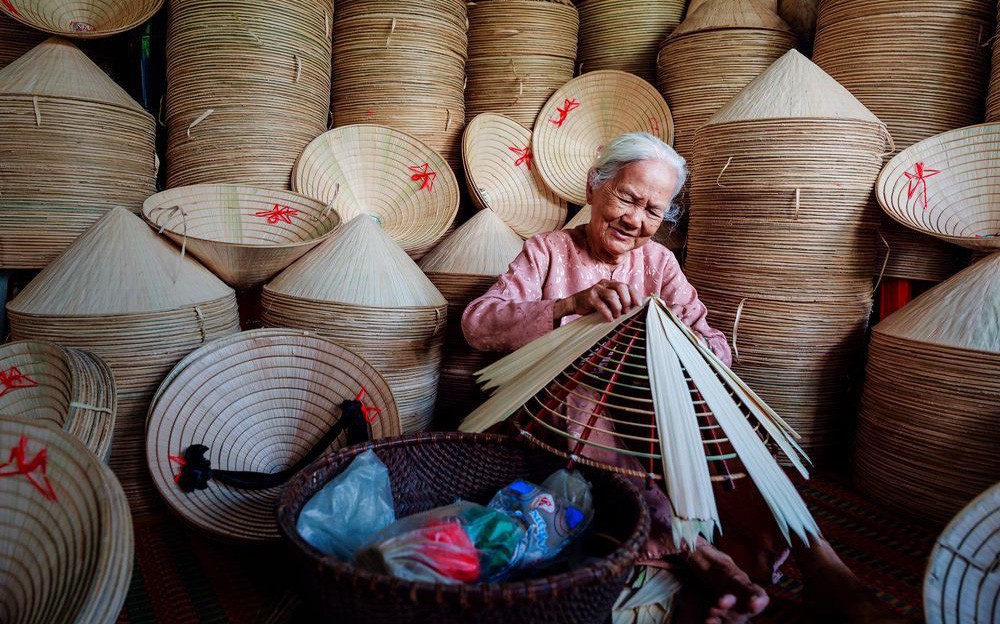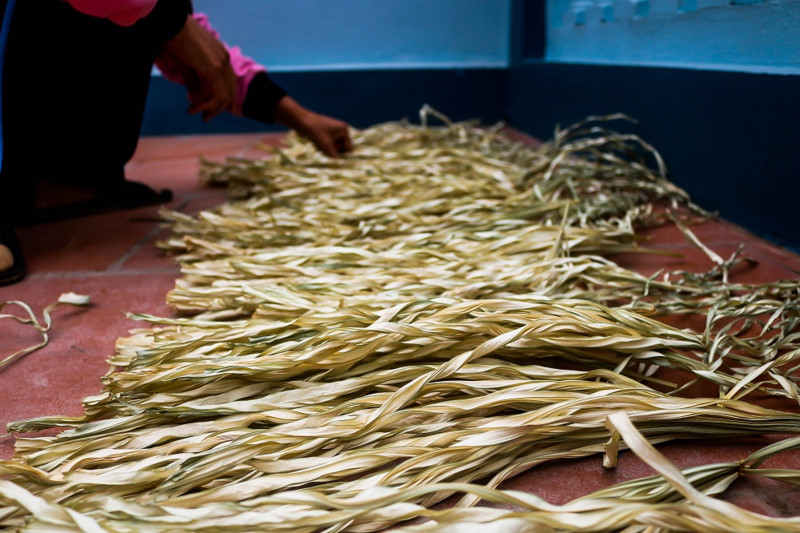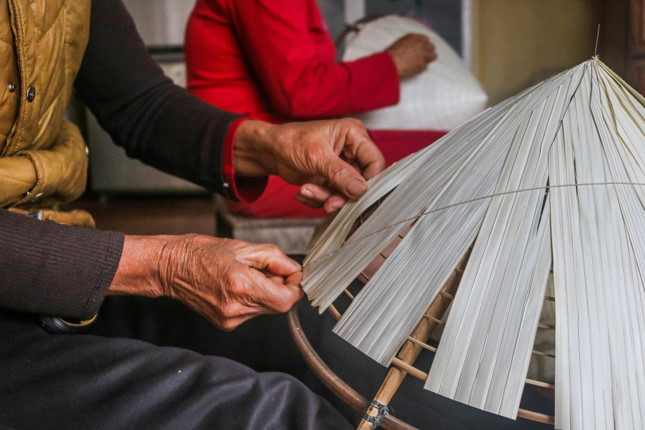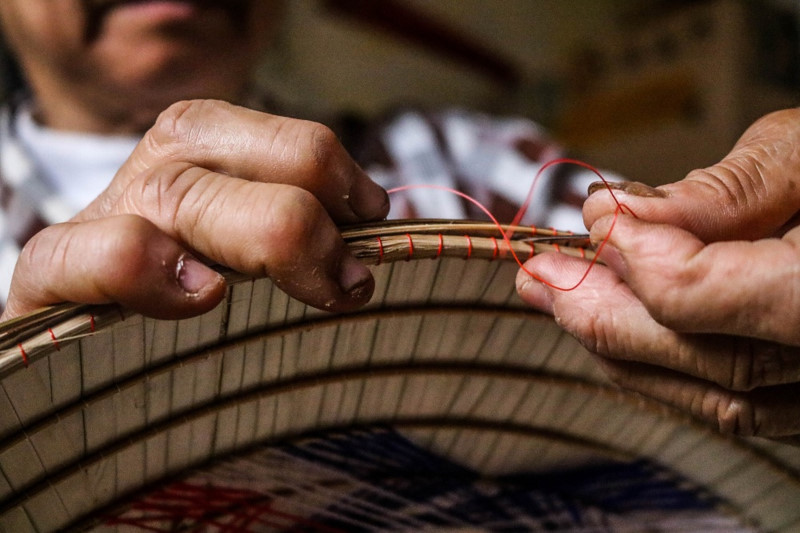Cost: 100 USD
Duration: 01 day
Whenever people talk about Vietnam, they think of the long, split national dress called the Ao Dai and especially the conical hats that are the symbol of Vietnamese women’s elegance and seductive beauty. These traditional conical hats are made in many provinces, namely Thanh Hoa, Quang Binh, Hue, etc. However, nowhere else can the special hats of Chuong village, Phuong Trung commune, Thanh Oai district, be found.
Seventy years old Mrs. Pham Thi Ba is called “the founder of hat making” by fellow villagers. She is respected not only for her lifetime’s worth of experiences but also because she revived the village’s special conical hats: “Unlike the conical palm hats of Quang Binh and Thanh Hoa provinces which are covered only two times, with the second layer being in a reverse direction, Chuong village’s hats are covered three times, two times with white palm and once with bamboo leaf. Thanks to the additional layer of bamboo leaf, Chuong hats are more solid and durable. Decorations on it are more sophisticated too, with the silk thread for sewing being small and stitches being even. More importantly, so as to make the work more professional, Chuong hat makers do no perform all the hat-making stages but specialize on building upon a frame which is made elsewhere. The local hat makers complete the hats with an aesthetic appearance suitable to customer tastes”.
In the past, the village ancestors made various kinds of conical hats: flat conical hats, medium hats, basket hats, flat palm hats with fringes, etc. But with changes in market demand, these kinds of hats became unsuitable, and in the 1930s, the white palm hats (otherwise called Xuan Kieu hats) appeared, then became quickly popular and continue to be so until today. This kind of hat is not as ornate as the ones of the old days and is efficiently made. For export quality, not just anyone can produce a hat of the necessary quality; the requirement is not only the makers’ talent but also their experience. Bamboo leaves must be split into very thin strings during the dry season. They then must be quickly submerged in water to preclude tearing and breaking. The main rings (the largest) must be even, smooth and shiny. The most sophisticated work is the treatment of the palm material. The makers buy dark green palms, then clean them with sand and work on them with a light touch or otherwise they will tear. After the step of treading on the palms, they expose them to the sun. The palms will go from dark green to white. The stronger the sun, the whiter the palms will become. Before using the palms, makers expose them briefly to sulfur to make them whiter and to preserve the color. And finally, they are exposed to frost to make them soft; them they are split and ironed.
Nowadays, besides the white palm hats that account for 90% of the sales, Chuong village also produces old palm and souvenir hats, Lam Xung hats and especially flat palm hats with fringes recently made by a number of old villagers to export to China, Taiwan and Japan.
Many historical ups and down have come and gone with the passage of time, but Chuong village hat making craft has continuously developed. The hats are of appeal not only to domestic customers but also to foreign ones. In the future, the number of people wearing conical hats may decrease but with the craftpersons hard-work and creativity for new models and products, Chuong village conical hats can be expected to hold their position and become the pride of not only Chuong village but of the entire country.






